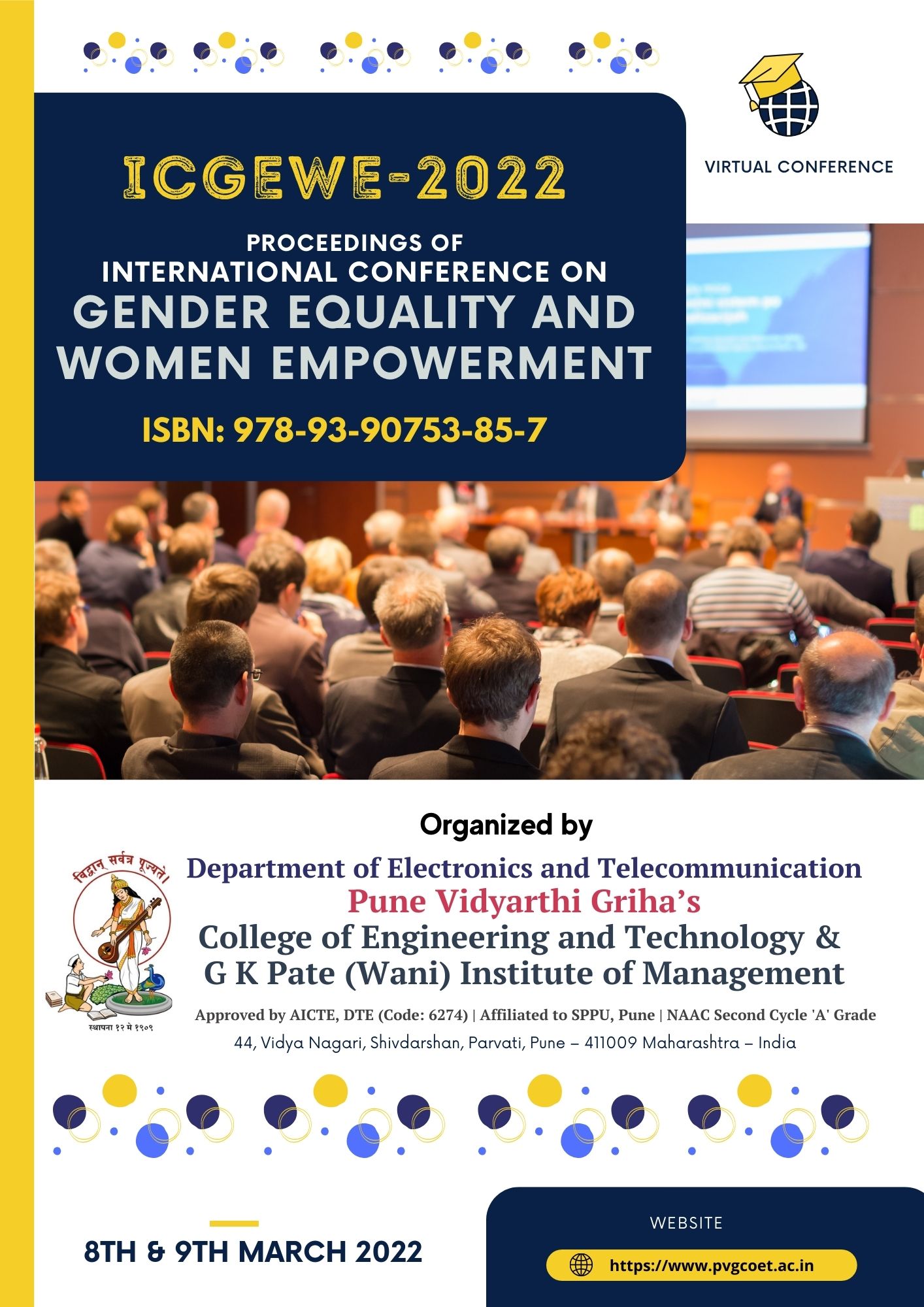ROLE OF INDIAN WOMEN IN ECONOMIC DEVELOPMENT-CHALLENGES AND OPPORTUNITIES
Keywords:
Working Women,, Rights,, ProblemsAbstract
India has the second population rank in the world; the women’s population is almost equivalent to that of man. India has gained swift growth and development in the past years in many provinces. One of the reasons being gender equity. This is disgraceful considering the important role enacted by women in the socio-economic growth of the country. From ancient to modern period, women’s condition-socially, politically and economically- has not remained similar and it kept shifting with times. India’s Law makers and our founding fathers were very determined to provide equal rights to both women and men in all streams. The Constitution of India is one of the finest equality documents and role model in the world. It provides necessities to secure equality in general and gender equality in particular. Law makers have various articles in the Constitution to safeguard women’s rights by putting them at par with men socially, politically and economically. In India, women have tackled a range of structural and social barriers in fully participating in the Indian economy, which not only hinders their individual agency but also limits India’s ability to continue to modernize. This research paper aims to focus on the contribution made by the working women in India towards the Indian economy and various problems faced by them.
References
Altuzarra, A., Gálvez-Gálvez, C., & González-Flores, A. (2019). Economic Development and Female Labour Force Participation: The Case of European Union Countries. Sustainability, 11(7), 1962.
Ananta, A. (1990). Ekonomi Sumber Daya Manusia. Jakarta.
Baltagi, B. H. (2005). Econometric Analysis of Panel Data. 3rd ed. Chichester.
Bank, A. D. (2018). Strategi2030: Mencapai Asia dan Pasifik yang makmur, Inklusif, Tangguh dan Berkelanjutan. Retrieved from Mandaluyong, Metro Manila, Filipina:Bank, W. (2000). Global Poverty Report . . Retrieved from
Boediono. (1998). Teori Pertumbuhan Ekonomi. Yogyakarta: BPFE Yogyakarta.
Borchers, A., & Pieler, T. (2010). Programming pluripotent precursor cells derived from Xenopus embryos to generate specific tissues and organs. Genes (Basel), 1(3), 413-426. doi:10.3390/genes1030413
Boserup, E. (1970). Women's Role in Economic Development. New York, USA: Marthin Press.
Bruno, M. (1998). Equity and Growth in Developing Countries: Old and New Perspectives on the Policy Issues." In Vito Tani and Ke-Young Chu (eds), Income Distribution and High Growth. Cambridge, Massachuset: MIT Press. Dumairy. (2006). Perekonomian India. Jakarta: Erlangga.
Durand, J. D. (1975). Labour Force in Economic Development: A Comparison of International Census Data 1946-1966. Princeton, NJ, USA: Princeton University Press. [12] Goldin, C. (1995). U-shaped female labor force function in economic development and
economic history. In T. Paul Schultz, Investment in Women’s Human Capital. Chicago: University of Chicago Press.
Kuncoro, M. (1997). Ekonomi Pembangunan, Teori Masalah dan Kebijakan. Yogyakarta, India: UPP AMP YKPN.
M.Th.Handayani, N. W. P. A. (2009). Kontribusi Pendapatan Ibu rumah tangga Pembuat Makanan Olahan Terhadap Pendapatan Keluarga. Piramida, V(1).
Mammen, K. (2000). Women’s work and economic development. Journal fo Economic Perspectives 14, 141-164.
Mangkoesoebroto, G. (2001). Ekonomi Publik. Yogyakarta: BPFE.
Mankiw, N. G. (2012). Pengantar Ekonomi Makro. Jakarta, India:: Salemba Empat. [18] Mukhlis, B. P. d. (2006). Studi Kasus Wanita-Wanita Penambang Pasir Di Desa Lumbung Rejo, kecamatan Tempel-Kabupaten Sleman. Jurnal Penelitian dan
PengembanganKesejahteraan Sosial, 11. doi:https://doi.org/10.33007/ska.v11i1.585
Sinha, J. (1965). Dynamics of female participation in economic activity. . Proceeding of the World Population Conference. Belgrade, Serbia.
Statistik, B. P. (2019). Indikator Pasar Tenaga Kerja India Agustus 2019. Retrieved from Jakarta: https://www.bps.go.id/publication/2019/12/06/25fbc42cac7c24ec0a5e9309/indikator- pasar-tenaga-kerja-India-agustus-2019.html
G. Moorthy, G. Shanmugaraj, R. SankarRaj, J. Swetha, P. Gunavathi, and R. Jeyaprakashini, “Design of a 48 V BLDC Motor for Military Application”, Springer,Micro-Electronics and Telecommunication Engineering, Lecture Notes in Networks and Systems, Volume 179, May 2021pp.335-349.
G. Shanmugaraj, B. V. Santhosh Krishna, S. SriSahithya, M. Sandhya, and T. H. Monikca, “Unhindered Safety Monitoring System for Underground Workers”, Springer,Micro-Electronics and Telecommunication Engineering, Lecture Notes in Networks and Systems, Volume 179, May 2021,pp.181-190.
J. Jijin Godwin, G.Shanmugaraj, M.Harhithaa, K.Sandhiya, S. Arivu Suder, “Robotic writing arm based on voice and gesture command for physically challenged “, International Journal of Psychosocial Rehabilitation (ISSN 1475-7192), Vol.24, Issue 8, May 2020, pp. 10627–10634.
Downloads
Published
How to Cite
Issue
Section
License

This work is licensed under a Creative Commons Attribution-NonCommercial-NoDerivatives 4.0 International License.















